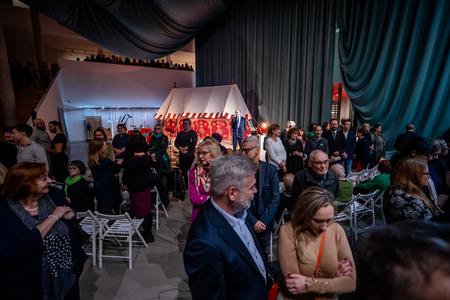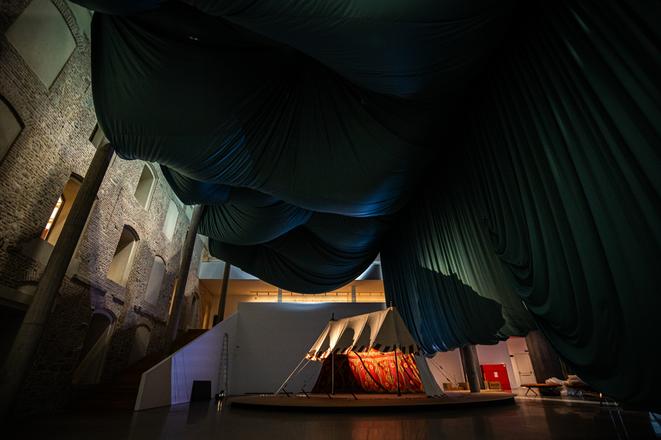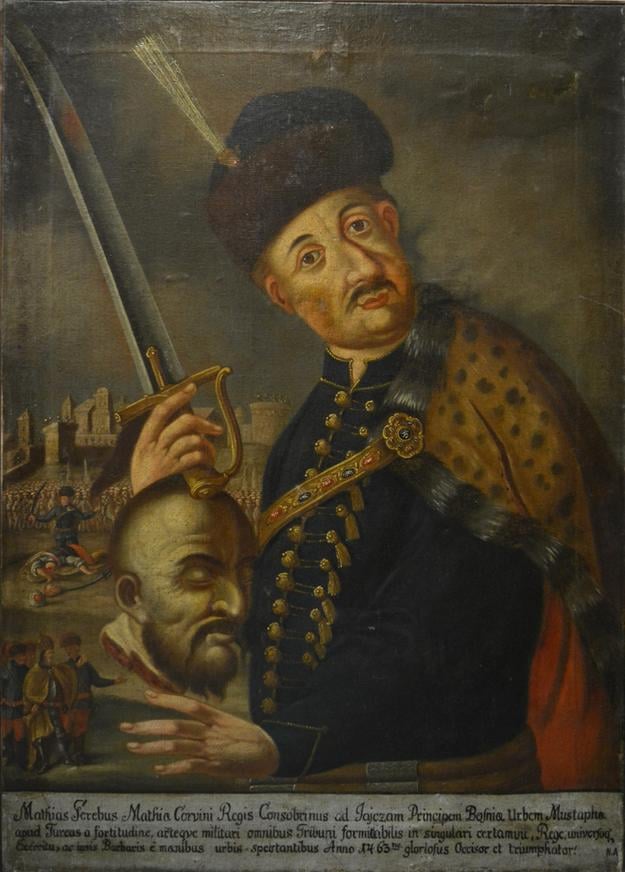A large richly, embroidered piece of cloth, reminiscent of palace architecture with flowers, evoking an atmosphere of relaxation in a flowering garden of paradise with fountains and arcades, attracts the attention of visitors in the atrium of the Slovak National Gallery. It is an Ottoman tent from the 17th century, the time of the Ottoman conquests, unique in European collections.
The tent used to house bloodthirsty Mohammedans with turbans and curved sabres who murdered innocents and stole virgins for the Sultan’s harem. At least this is one of the stereotypes with which the Fruits of Discord exhibition opened in early December. It seeks to take a critical look at the clichés handed down through generations.
In the article you will read:
what the Ottoman expansion brought to the region of present-day Slovakia and how traditional ideas are wrong
how the Slovak National Gallery managed to collect artefacts, many of which viewers will see for the first time
how it happened that a Catholic priest wore a cloth from a turban
how the propaganda of the time worked and still reaping its fruits today
A fabricated image
The poem Turčín Poničan by Samo Chalupka, one of the prominent figures of the Slovak Romantic movement in the 19th century, is still widely known today and read by pupils in primary school. It proves that the Ottoman invasion is still part of Slovakia’s historical memory. However, this is often not made up of facts, but a fabricated image, the roots of which go back several centuries.

The exhibition at the Slovak National Gallery (SNG) is subtitled Portraying the Ottoman Presence. This period is often reduced to a conflict between ‘barbarian infidels’ on the one hand and ‘defenders of faith and civilisation’ on the other. The authors of the exhibition want to shatter this image.
“We conscientiously examined the state and church collections in Slovakia. The exhibition also includes numerous objects from foreign collections. The public can see many unique artefacts for the first time,” art historian Jana Švantnerová, one of the three curators of the exhibition, told the Sme daily. “We were looking for authentic material. We searched for artefacts in foreign collections with a connection to the territory of today’s Slovakia.”
Fruits of Discord – Portraying the Ottoman Presence
• Venue: SNG Bratislava, Water Barracks, Atrium
• Dates: December 6, 2024 – May 18, 2025
• Curators: Jana Švantnerová, Martin Čičo, Denis Haberland

 A spread-out Ottoman tent in the atrium of the Slovak National Gallery. (source: Sme - Marko Erd)
A spread-out Ottoman tent in the atrium of the Slovak National Gallery. (source: Sme - Marko Erd)
 The severed head of Osman in the hand of Matej Gerebus, a hero in the Battle of Jajce in 1423, oil by an unknown painter from the beginning of the 18th century (source: Regional Museum in Prešov)
The severed head of Osman in the hand of Matej Gerebus, a hero in the Battle of Jajce in 1423, oil by an unknown painter from the beginning of the 18th century (source: Regional Museum in Prešov)